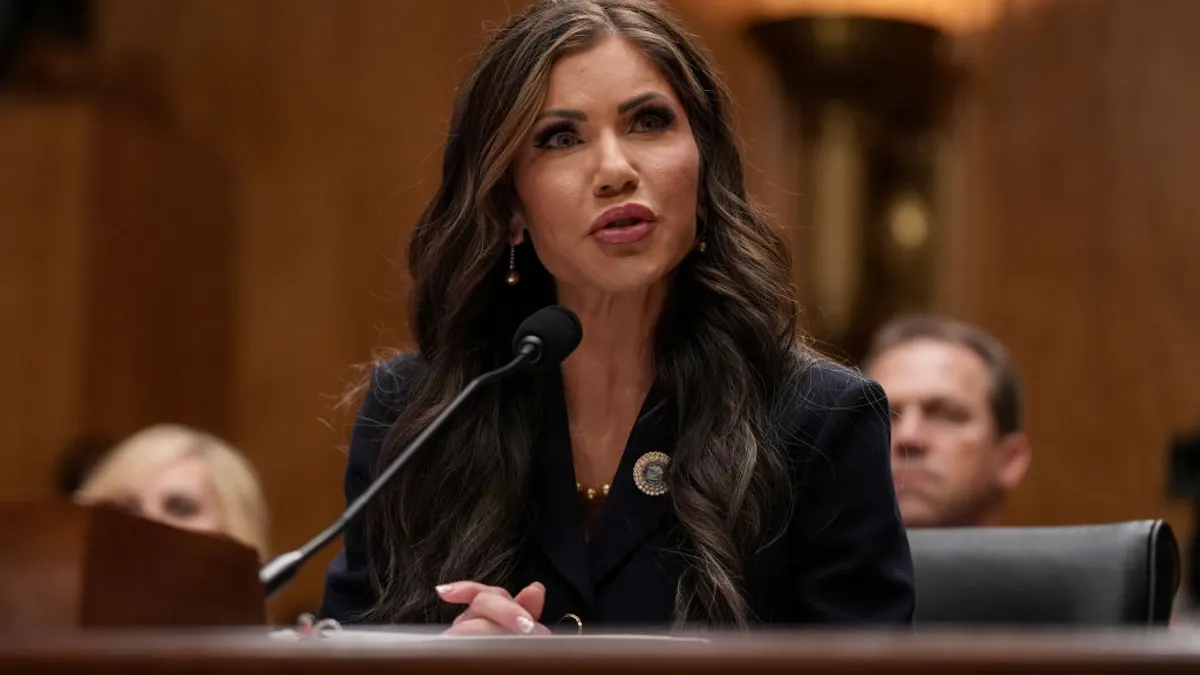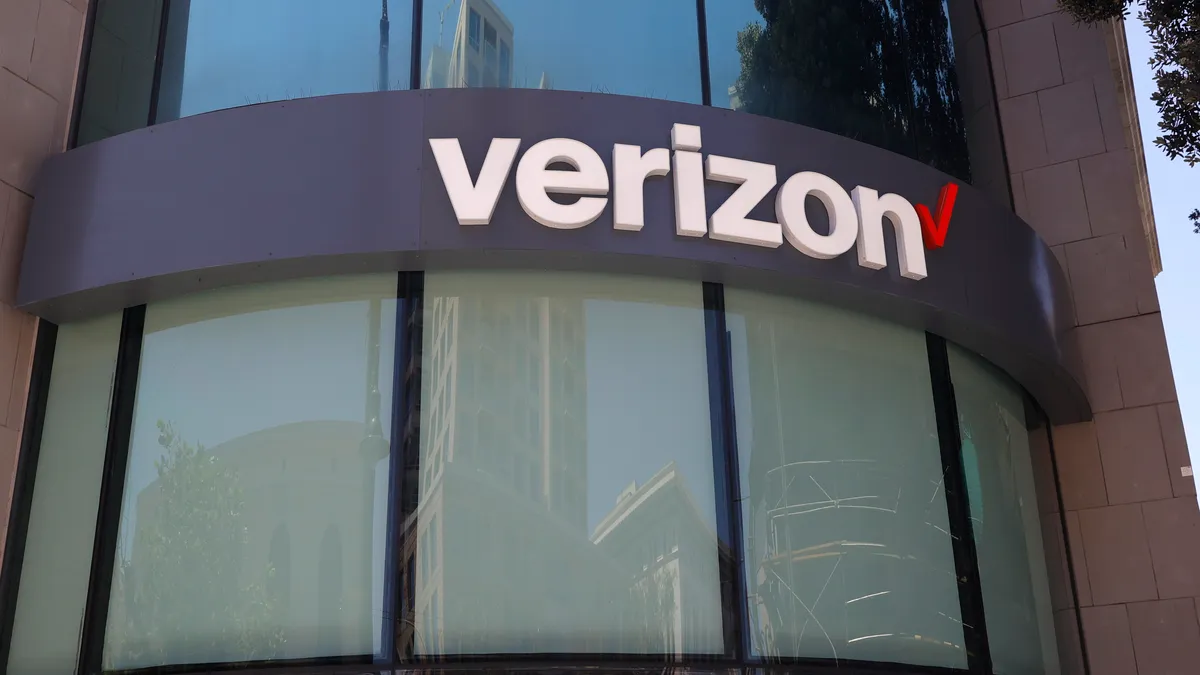Editor's note: Rosie Bradbury is new to the HR beat. She's filling in this week for HR Dive's ongoing series, Back to Basics. If you're new to the field (or just need a little refresher), follow along as she speaks with legal experts, peruses federal guidance and lays out the current state of joint employment in this week's column.
Let me paint you a picture. Paul, an employee at a fast food burger joint, is chatting with his neighbor about how, just in the past few months, he's struggled to keep on top of his finances. He's paid a couple bills late and his credit card debt is building up. Nothing in Paul's life has changed: he's paying the same rent in his Denver apartment, he's single and he's healthy.
His neighbor finds Paul's new financial hardship strange — in January, Colorado's hourly minimum wage rose from $10.20 to $11.10, on pace to reach $12/hour by 2020. If anything, Paul should be feeling more financially stable. So he suggests Paul check his next pay stub. When Paul does, he finds that his manager never figured the new minimum wage rate into his salary.
Paul takes his case to a small claims court to demand his lawful salary, as well as back pay. The court now has to figure out whether the fast food joint in Denver should pay up, or whether the global burger franchise it's a branch of is also liable. Who's on the hook?
As I dug around to answer this question, I found myself delving into the complicated and currently hotly debated subject of joint employment law under the Federal Labor Standards Act (FLSA) and the National Labor Relations Act (NLRA). Joint employment may occur when control of the terms and conditions of employment is shared between more than one entity, but it is a complicated area and specific employment laws affect how, exactly, it works.
Under the FLSA, for example, multiple employers found to be at fault in a wage or labor violation can trigger joint and several liability, under which Paul could receive payouts from both the Denver store and the burger franchise of which it is a branch.
The question is, would Paul's case qualify?
Considered a joint employer?
In April, the U.S. Department of Labor (DOL) proposed guidelines to update how joint employment is determined under the FLSA. Under its proposed "four-factor balancing test", derived from Bonnette v. California Health & Welfare Agency, for the burger franchise to be brought to court, it would need to exercise control over the ability to:
-
Hire or fire employees.
-
Change schedules or conditions of employment of workers at its stores.
-
Make decisions about how much and how often workers are paid.
-
Maintain employment records of workers.
I asked Marty Heller, a Fisher Phillips attorney who specializes in joint employment cases, to help break this test down for me. Essentially, the DOL's rule change aims to clarify joint employer status, Heller told me, and that both the National Labor Relations Board (NLRB) and DOL want the courts to fall in step with federal regulations to give the business community greater certainty.
The DOL's current joint employer regulation revolves around cases in which two entities are "not completely disassociated" from each other. It covers scenarios in which an employee is simultaneously benefitting or working for multiple employers, and the employers are knowingly sharing the worker's labor, one entity is acting in the other's interests, and control over the worker is shared.
The courts have inconsistently interpreted this rule, as various federal courts have followed different multifactor tests. So, the outcome of Paul's case is likely to depend on which standard the court follows. Federal guidelines varied as consecutive presidential administrations have swung back and forth; the Obama-era DOL defined joint employment more broadly, for example.
DOL's proposed rule faces political opposition from Democrats, so there's not much certainty coming from the agency at the moment either. A letter signed by 19 state's attorneys general argued that "narrowing the definition of 'joint employer' would deny workers' legal protections and potentially allow employers to evade justice for committing labor violations."
The NLRB guidance
The proposed DOL change comes on the heels of similar proposed NLRB guidance, which recommended that joint employers must share control over "employees' essential terms and conditions of employment," including hiring, firing, directing, or disciplining workers. If passed, the proposed guidance would mark a break from the Obama administration standard which said that employers with indirect as well as direct control over employment terms could qualify.
Compared to DOL regulations that deal with violations of federal laws — such as the FLSA which regulates overtime pay, recordkeeping and minimum wage and the Family and Medical Leave Act — the NLRB guidance relates specifically to collective bargaining rights and potential charges of unfair labor practice violations under the National Labor Relations Act.
Previous court cases involving NLRB joint employment standards have, for example, involved situations where a company was found to have committed labor violations against temporary workers sent by a staffing agency, raising the question of whether those workers were jointly employed and whether they were eligible for the collective bargaining agreement of employees at the contracting company.
According to legal experts, under the proposed NLRB guidance, temporary workers would be less likely to be considered eligible for a collective bargaining agreement at their place of work, unless the contracting company is exercising direct control over essential terms and conditions of employment.
Employers have lobbied in favor of the proposed guidance and have argued the Obama-era NLRB definition came with an unreasonable price tag. The International Franchise Association, a lobbying organization for franchise industries, claimed the NLRB standard — which was affirmed in the landmark Browning-Ferris decision in 2015, a case which enabled franchise workers' unions to directly bargain with franchisers — cost the sector $33.3 billion and up to 376,000 lost job opportunities annually.
Minimize liability
Losing control
To find out how employers might steer clear of issues, I checked in with Heller. The crucial factor in joint employment cases? "Who's controlling what the employee is doing," he said.
From an employer standpoint, "the less you control, the more you can give away your control, the better off you are," Heller told me. But how much is too much? Where's the line?
Uniform training programs or employee handbooks that a franchise might introduce across its entire workforce are generally fine. It's when employers have "a desire for such uniformity that you want to exercise more control" that they start to get into trouble, Heller added. Across the workplace, Heller finds that franchises which are just starting up or growing tend to find themselves in joint employment cases more often, whereas established employers tend to be more aware of federal regulations.
Requiring approval on new hires, disciplining workers, telling employees what times to come in, and setting pay are all practices which may bring some risk of the franchise being held liable in wage and hour violations — and that never comes cheaply, Heller noted.
Clear communication
HR professionals and in-house legal teams will do well to remember that it's not just about what an employer's contract says, but that what's on paper mirrors what they're actually doing. Experts say the key for a contracting employer to avoid this slippery slope is clear communication.
"It's very easy for me to write the contract the way it's supposed to be," Ron Holland, a partner at McDermott, Will, & Emery said. "But if nobody is actively communicating to the front-line folks who are going to be managing the relationship of what they should be doing [...] or you're not checking in periodically to make sure that we're doing the right things, that's where problems arise."
Holland said there's a particular risk that those involved in quality control will cross a line, so it's important for HR professionals to pay attention to those communication channels.
Protect your brand
Restaurant franchisors may have a legitimate interest in ensuring that individual managers, like the one at the burger store where Paul works, are operating with basic ethical standards and complying with local, state and federal law.
In the franchise world, a franchisor can implement some uniform controls over individual franchises "in the interests of protecting its brand," Mark Kisicki, an attorney and shareholder at Ogletree Deakins, told me. He added that ambiguity of what type of action a franchisor can take to protect its brand is "resolved" in the proposed DOL guidance.
In an example cited in the proposed rule by DOL, the agency said that a franchisor that has a global brand has the right to provide individual licensed franchisees access to its employment applications, handbooks and operation guidance documents. As long as the larger franchisor isn't responsible for or involved in day-to-day operations, it wouldn't be a joint employer relationship.
So if the proposed regulations are implemented, for Paul to receive a pay-out from the burger franchise rather than the outpost in Denver, the franchisor would need to have been involved in the day-to-day operations for him to have a strong case.
What comes next?
Employment experts expect the NLRB final rule to be adopted toward the end of this year, while the DOL's may take longer (the comment period closed at the end of June). For employer's uncertainty to be completely settled may take even more time; Kisicki predicted that expected legal challenges on the DOL rule won't be resolved before the next presidential election.





















